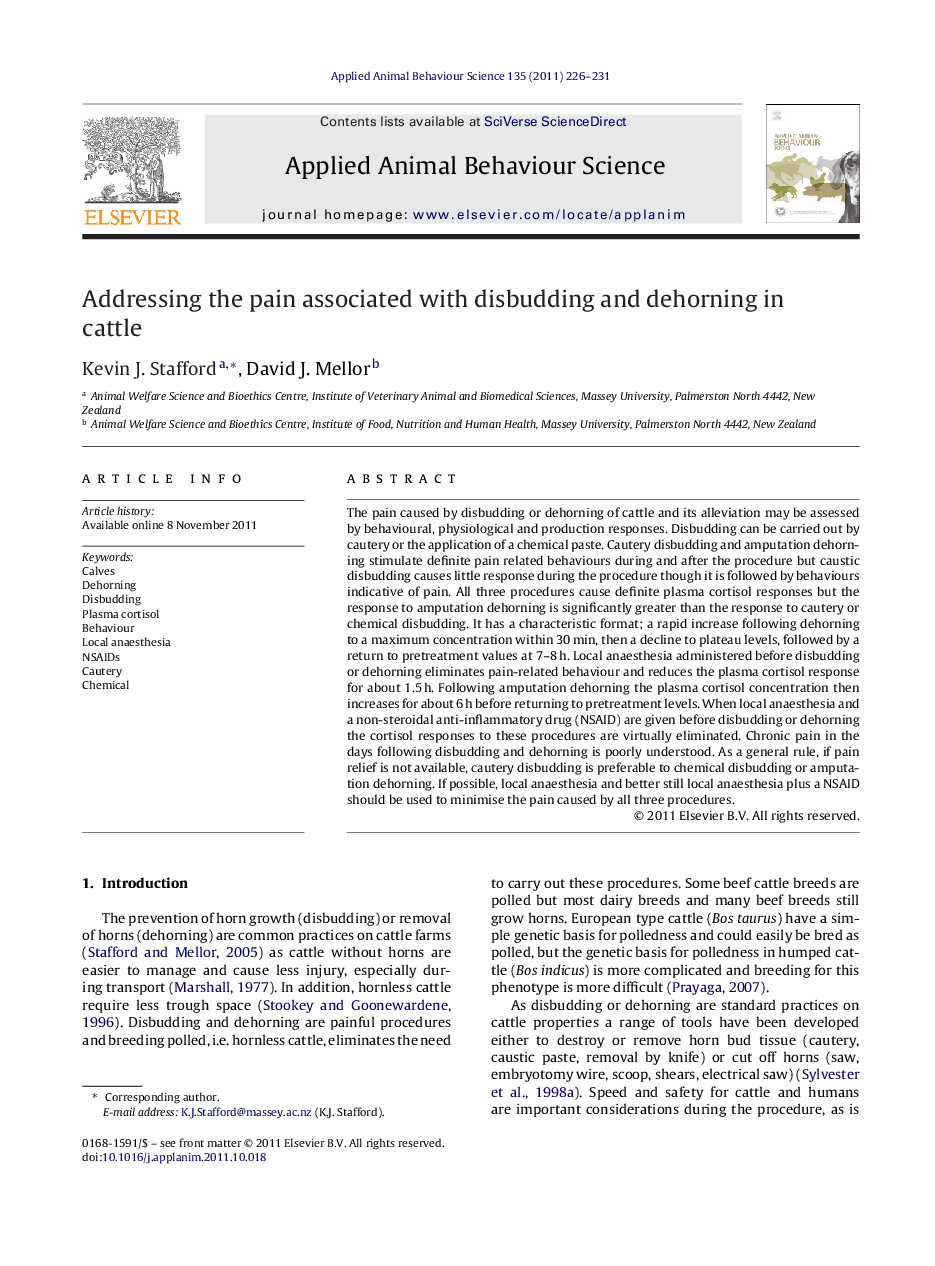| Article ID | Journal | Published Year | Pages | File Type |
|---|---|---|---|---|
| 4523026 | Applied Animal Behaviour Science | 2011 | 6 Pages |
The pain caused by disbudding or dehorning of cattle and its alleviation may be assessed by behavioural, physiological and production responses. Disbudding can be carried out by cautery or the application of a chemical paste. Cautery disbudding and amputation dehorning stimulate definite pain related behaviours during and after the procedure but caustic disbudding causes little response during the procedure though it is followed by behaviours indicative of pain. All three procedures cause definite plasma cortisol responses but the response to amputation dehorning is significantly greater than the response to cautery or chemical disbudding. It has a characteristic format; a rapid increase following dehorning to a maximum concentration within 30 min, then a decline to plateau levels, followed by a return to pretreatment values at 7–8 h. Local anaesthesia administered before disbudding or dehorning eliminates pain-related behaviour and reduces the plasma cortisol response for about 1.5 h. Following amputation dehorning the plasma cortisol concentration then increases for about 6 h before returning to pretreatment levels. When local anaesthesia and a non-steroidal anti-inflammatory drug (NSAID) are given before disbudding or dehorning the cortisol responses to these procedures are virtually eliminated. Chronic pain in the days following disbudding and dehorning is poorly understood. As a general rule, if pain relief is not available, cautery disbudding is preferable to chemical disbudding or amputation dehorning. If possible, local anaesthesia and better still local anaesthesia plus a NSAID should be used to minimise the pain caused by all three procedures.
